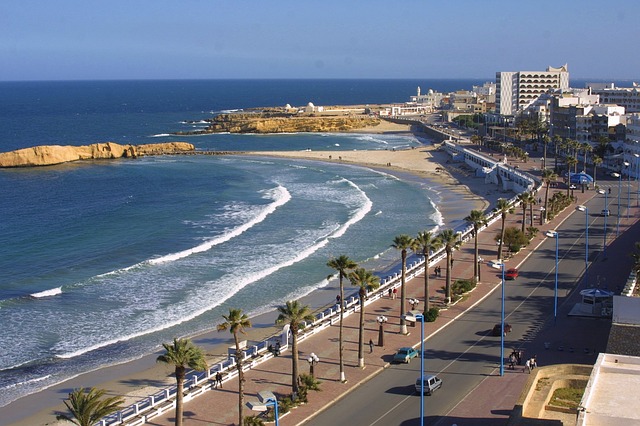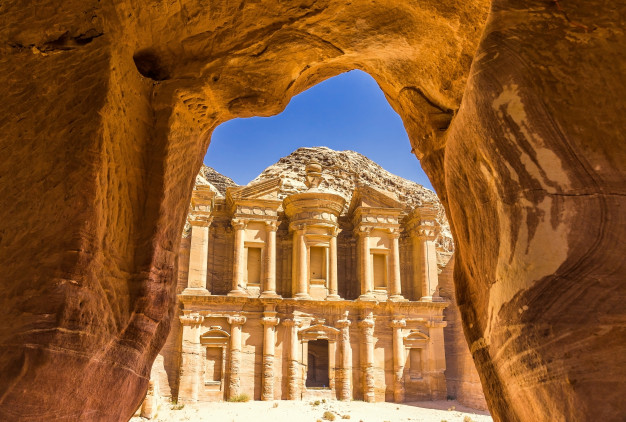Heritage and Culture
Along the coast of Israel to the deserts of Saudi Arabia, the Middle East is filled with some of the most extraordinary landscapes and cities in the world. From impressive natural phenomenon to exquisite historical sites that reflect each country’s heritage and culture, we list the most beautiful places in the Middle East.
The Dead Sea
Bordered by Jordan, Palestine, and Israel, the Dead Sea is actually a saltwater lake, known to be one of the most saline bodies of water in the world, as well as one of its most amazing. Thanks to its high salt content, the coasts of the Dead Sea are filled with extraordinary salt deposits and mineral formations, which contrast beautifully with its soft sand and the clear tranquility of its water.
The Dome of the Rock
Located on Haram Al-Sharif in the heart of Jerusalem, The Dome of the Rock is one of the holiest sites in the world and a stunning example of Islamic architecture. Built in the 7th century, the sanctuary features an octagonal structure, a magnificent golden dome, and extraordinary tile works inspired by the Byzantine style. Inside the Dome is the Foundation Stone, a sacred artifact of immense importance to those of both Muslim and Jewish faith.
Erbil Citadel
On a mound raised about 30 meters above the rest of the city is the Erbil Citadel, the ancient center of the Iraqi city of Erbil, and the oldest continuously occupied settlement in the world. The Erbil Citadel was added to the UNESCO list of World Heritage Sites in 2014, recognizing its immense historical and cultural significance.

Hegra
Located in present-day Saudi Arabia, Hegra was one of the largest cities in the Nabataean kingdom, second only to Petra in Jordan. The city was built in the 1st century AD, originally it consisted of a residential area and a necropolis. Of this remain 131 colossal tombs, surprisingly detailed, cut into the rock walls. Hegra was considered cursed for a long time and was shunned by locals and travelers, leading to its extraordinary preservation.
Khor al-Udaid
One of the most unique landscapes in the Middle East, Khor al-Udaid features a stunning juxtaposition of desert and sea on Qatar’s Persian Gulf coast. During the day the sea rises gently between the soft white sand dunes, creating a beautiful clear and still inland sea, before retreating at night. During sunsets, the landscape becomes even more glorious, reflecting a myriad of rich colors on the sands and sparkling waters.
Luxor
Often called the largest open-air museum in the world, Luxor Egypt is brimming with beautiful ruins, mosques and temples, which come together to make the city one of the most extraordinary in the Middle East. Karnak Temple features iconic rows of sandstone columns and beautifully preserved friezes, while over 50 tombs lie in the spectacular Valley of the Kings, including the stunning Tomb of Tutankhamen, which surrounds visitors with glimpses of Egypt’s rich cultural past.
Nasir al-Mulk Mosque
Also known as the Pink Mosque, the Nasir al-Mulk mosque in Shiraz, Iran has become famous for its intricate tiles and extraordinary use of stained glass in its windows, making it one of the most striking houses of worship in the world. As the morning sunlight flows through the windows, it casts stunning pools of jewel color on the Persian tiles and rugs, creating a never-before-seen patchwork of pattern, light and color.

Petra
Known as the red-pink city for the vibrant color of its sandstone, Petra is one of the most famous archaeological sites in the world and has been named one of the wonders of the world by the New 7 Wonders Foundation. Capital of the Nabataean kingdom, Petra was an important commercial and cultural center for several centuries before being largely abandoned. Although much of the city has been destroyed, the numerous tombs, temples and streets that remain are of indescribable beauty.
Shah Square
The monumental Shah Square in Isfahan, Iran is one of the largest and most impressive squares in the world. Built in the early 17th century and featuring buildings from the country’s Safavid era, the square brings together some of Isfahan’s most beautiful and culturally important sites, with the stunning Shah Mosque, Sheikh Lotf Allah Mosque, royal Ali Qapu Palace and the lively Isfahan Grand Bazaar which forms the four sides of the square.
Sheikh Zayed Mosque
Sheikh Zayed Mosque in Abu Dhabi is a marvel of contemporary Islamic architecture. Inspired by Arabian, Moorish and Persian design, the mosque stands out from its predecessors thanks to its enormous size, built to accommodate over 40,000 worshipers, its dazzling pure white exterior reflected in puddles of water, and the spectacular richness of its interior, with marble columns inlaid with mother of pearl, Swarowski crystal chandeliers and beautifully woven Persian rugs.
Socotra Archipelago
Located halfway between the Arabian Peninsula and the Horn of Africa, the Socotra Archipelago is a collection of four small Yemen islands and features some of the most beautiful landscapes in the world. Due to its isolated nature, a third of plant life is unique to the island, including the amazing dragon tree and large exotic coral reefs, while the undisturbed beaches and crystal clear waters make the islands a tropical paradise.
The White Desert
Located in the dramatic Farafra Depression in western Egypt, the White Desert is stunningly beautiful, featuring miles and miles of unusual otherworldly rock formations formed millions of years ago when the desert’s surface was covered in a layer of chalk. Today they surpass the soft sand, punctuate the otherwise typical landscape with their dramatic forms. The White Desert is especially spectacular at night, when the moonlight and stars give it an ethereal glow.
